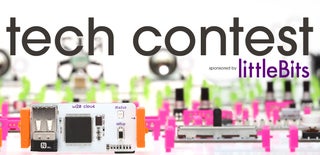Introduction: The Plant Pot
hello world,
please support & share our mission;igg.me/at/smartplants
a smart plant pot that can e-mail you once thirsty, hot/cold, sleeping etc. charge it like a cell phone, no prior gardening, electrical or programming experience required.
-
update 8: wireless charging & solar skin 2.0 (in progress... follow for updates).
.
update 7: pot2 - www.instructables.com/id/Pot2/
.
update 6: www.instructables.com/id/DIY-Smart-Plant-pot/
update 5: new body proposal, stackable cubes
update 4: solar sking upgrade - https://www.instructables.com/id/Solar-Powered-Plan...
update 3: color change upgrade - https://www.instructables.com/id/Glow-a-Pot/
update 2: $4.50 wifi upgrade - https://www.instructables.com/id/Envolysis/
update 1 :The Plant Pot basic ( 9/16/2014 )
.
what? think of me as a smart plant pot that can let you know about your plant's condition. with the help of a microcontroller and sensors, the plant pot alerts the user about the plant's condition. it is connected to the cloud, so the user can control the plant pot remotely from any browsing capable device.
.
why? Plants are the building blocks of planet earth yet most people know very little about them. Or maybe you may be scared of not succeeding. some may just not have the time to always make sure their plants are healthy. Plants clean the air. They also naturally absorb negative energy in the air, giving off positive. So for a healthier planet, the plant pot is here to assure no plant fails.
.
how? the plant pot is an open source, non-profit instrument. unlike mainstream electronics/products (needing constant yearly model changes), the capabilities of plant pot is assured to be always at the highest possible level by the end users. the end user can either collect my parts him/herself and put together the plant pot on their own or make a donation to the plant doctor team and get one shipped to them worldwide (either as DIY kit or finished product).
.
the Plant Pot is happy to be here on planet earth, let's build !
Step 1: Frame & Electronics
I can be made from many different materials. currently I am made out of a plastic pot. My planned upgrade is a custom made clay pot.
.
Plant pot can be;
- hand made with clay
- cut out of existing plastic pot
- can be 3D printed (last step for updates)
.
In my heart I am equipped with;
- cactus micro board with onboard wifi chip
- light, water, temperature & humidity sensors
- battery case (short pin 18650s) orbattery case (regular 18650s)
- rgb led module
- mini breadboard
- jumper cables
- 18650 batteries
Step 2: Built in WiFi Plant Health Monitor
plant pot can be recharged/reprogrammed via usb. attached you can find the code.
.
Green means every condition is as needed for the current plant/strain automatically through our online database. the end user simply enters the plant type and age on the webpage
Yellow means plant is sleeping (no light) or fault in the lighting system, if the light is off during ON stage.
Red means the plant is too cold or hot depending on the season.
Blue means the plant is thirsty.
.
Once either of the sensors are triggered I can send an e-mail (tweet). The user can read my sensor data on the cloud.
.
visit for more information on cloud data management / sign-up
Attachments
Step 3: Attention Needed !
cold
thirsty
asleep
alive & healthy
Step 4: History
Plant Pot - made on earth . 2014
.
.
.
.
.
.
Step 5: 3D Printed Body
update coming soon..
the illustrator file, pot1_laser.ai is 6.35mm thickness design for the local cnc machine. it is much thicker than needed. 3mm should be perfect. will upload a thinner wall version soon.!

Participated in the
Microcontroller Contest

Participated in the
Tech Contest












